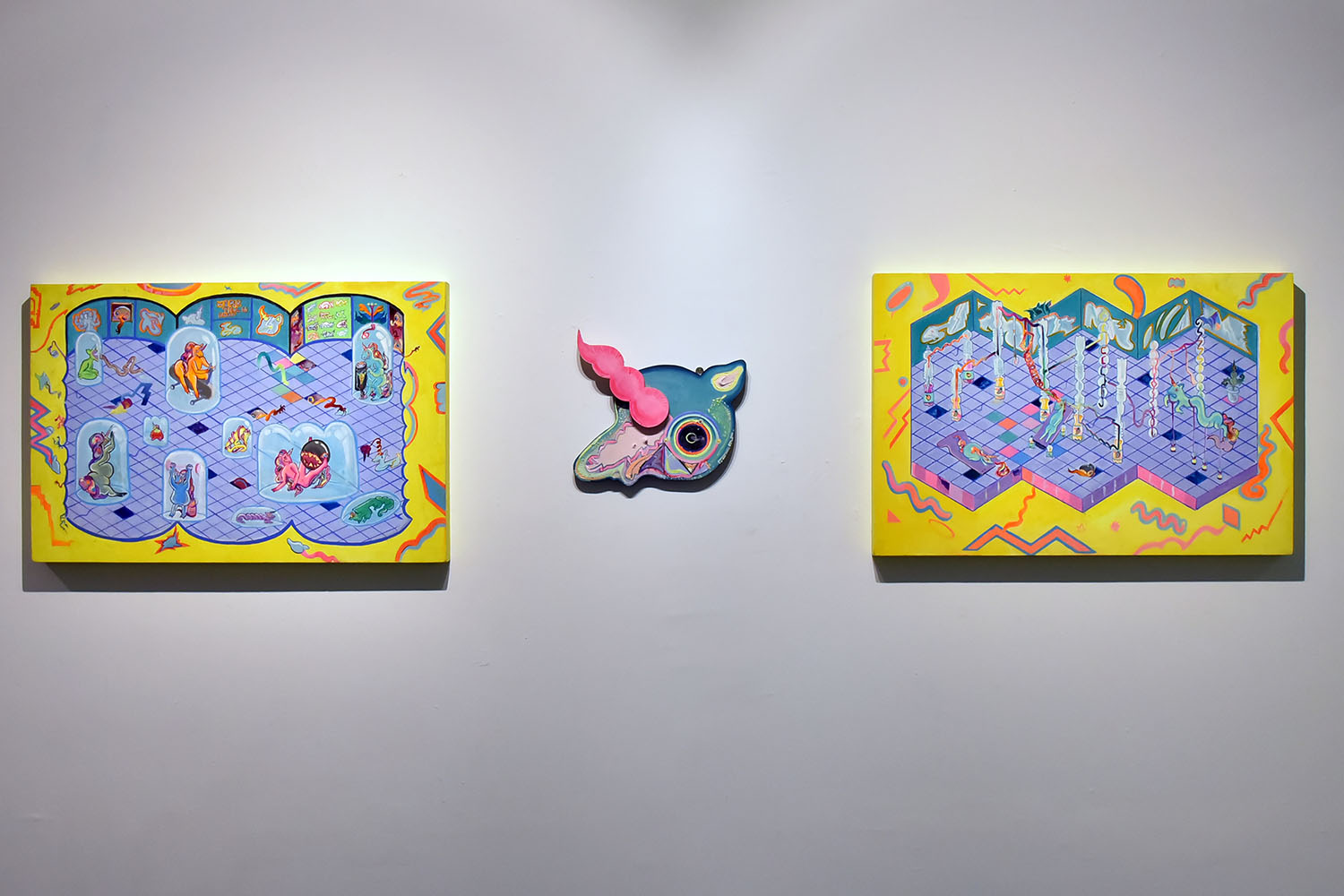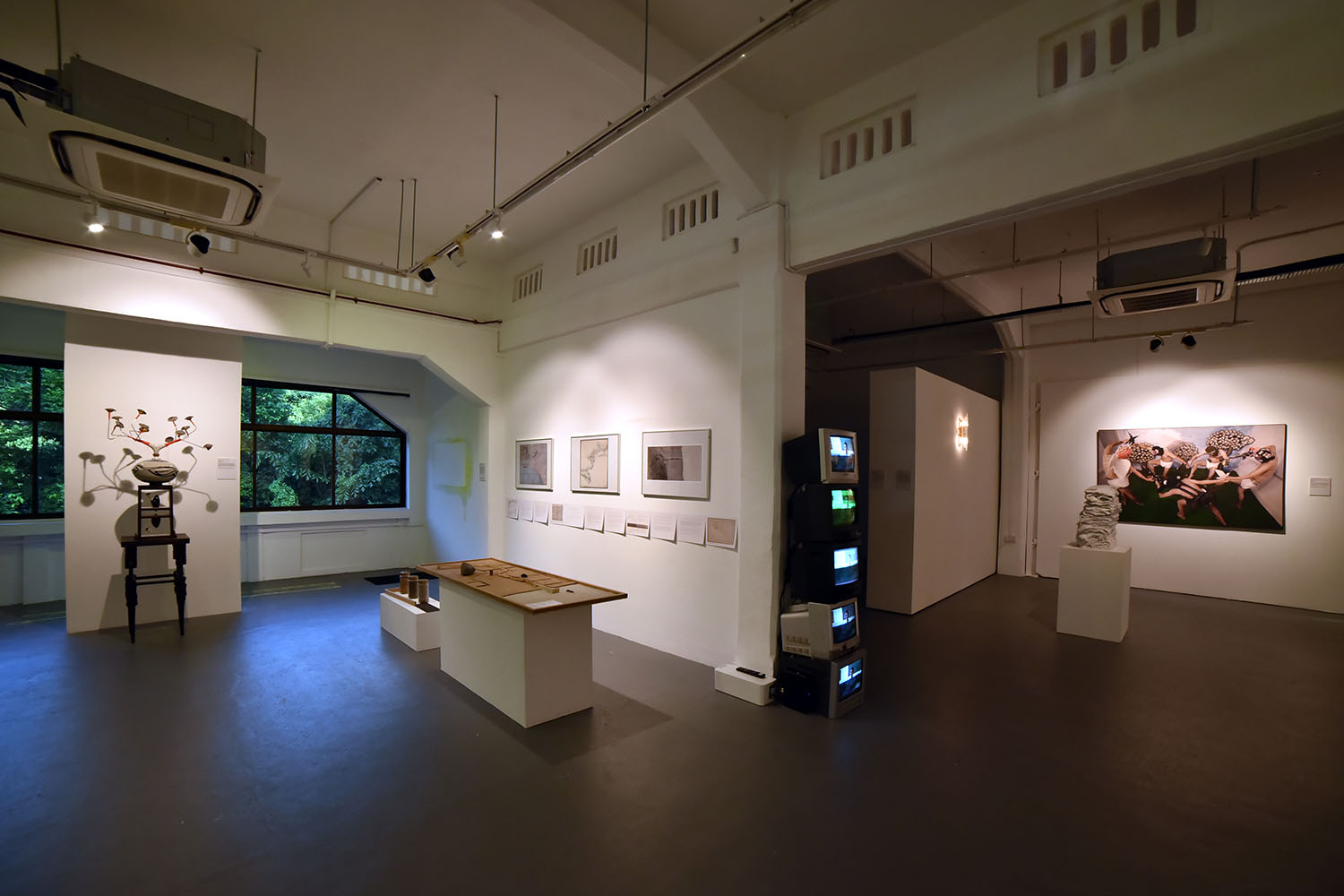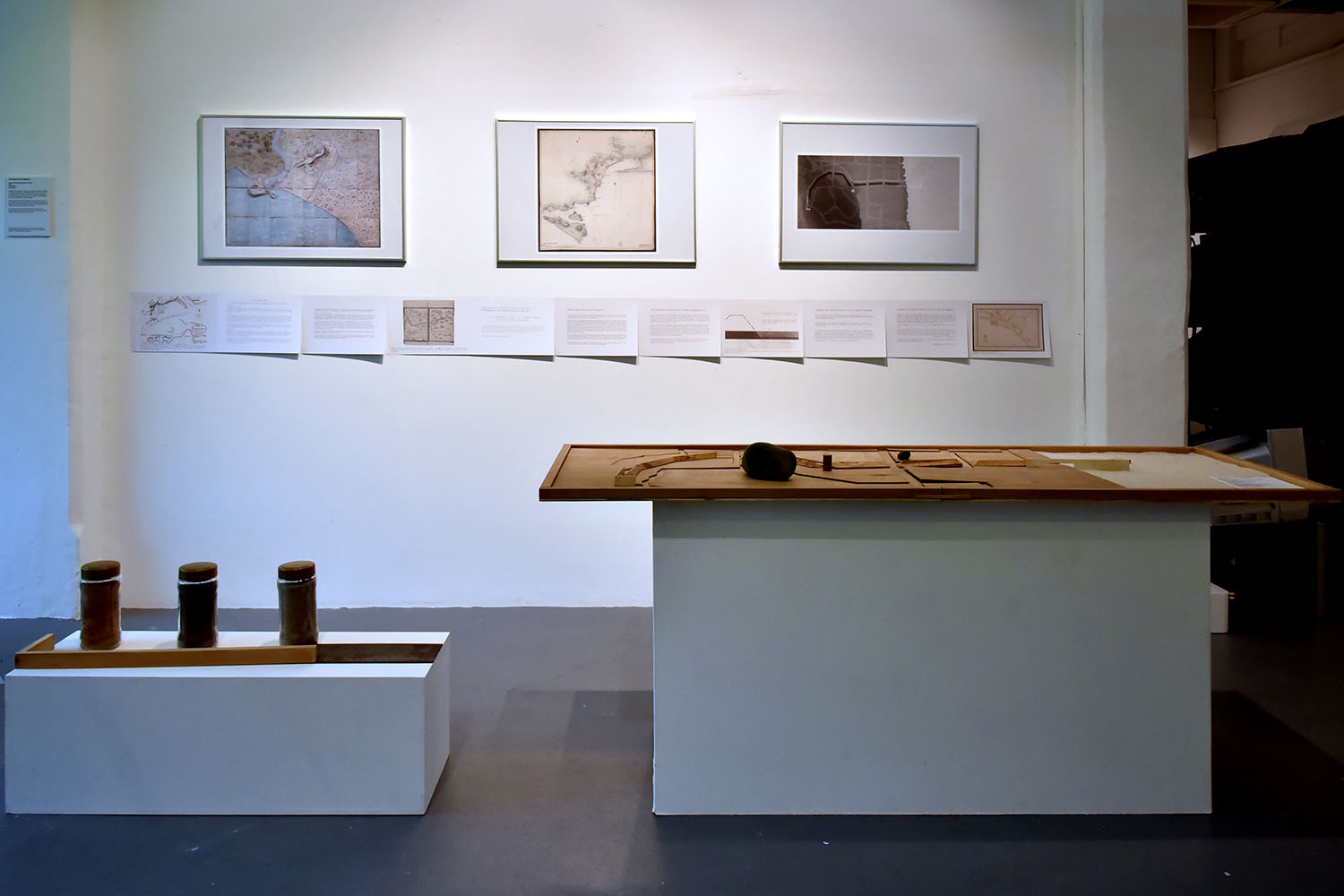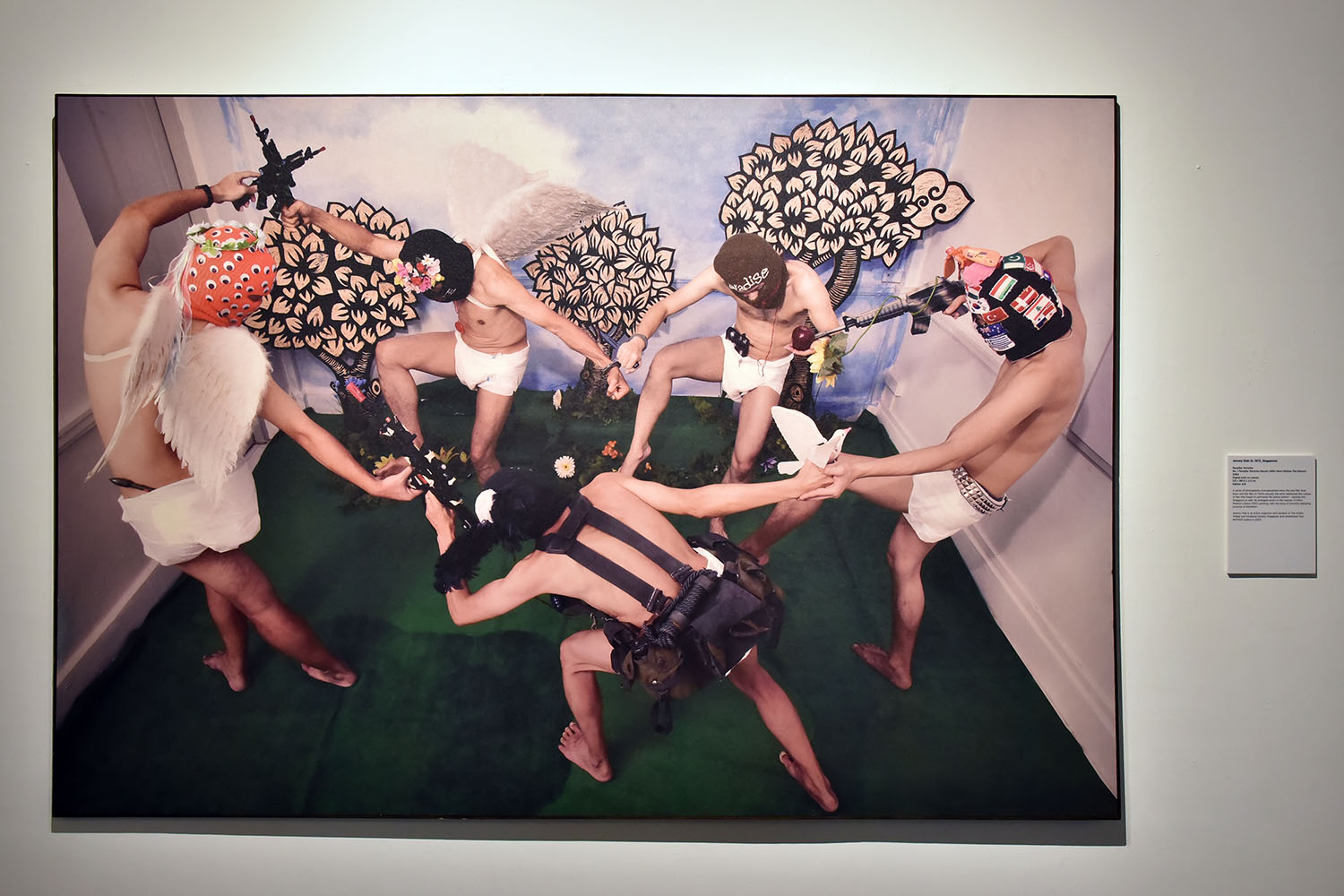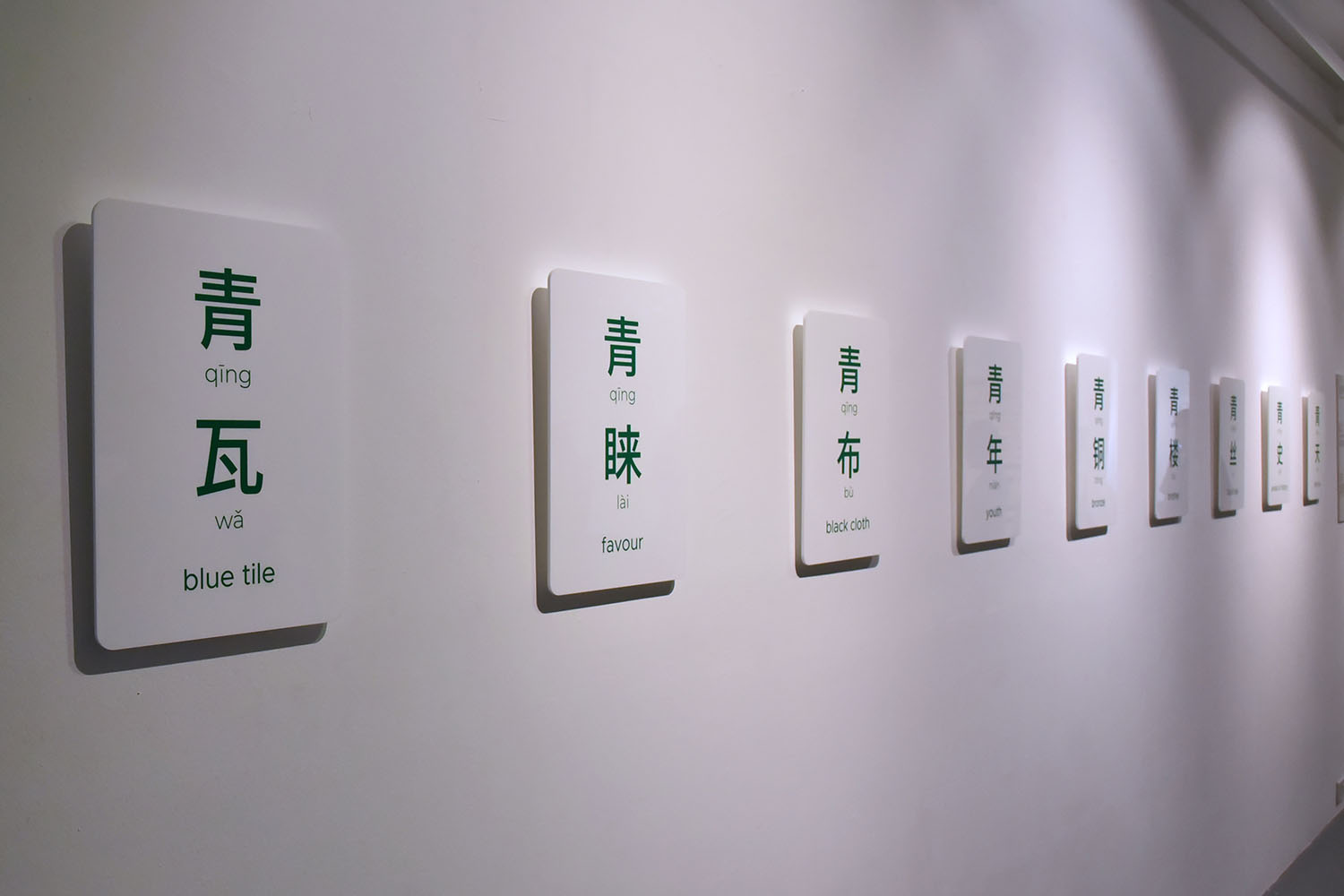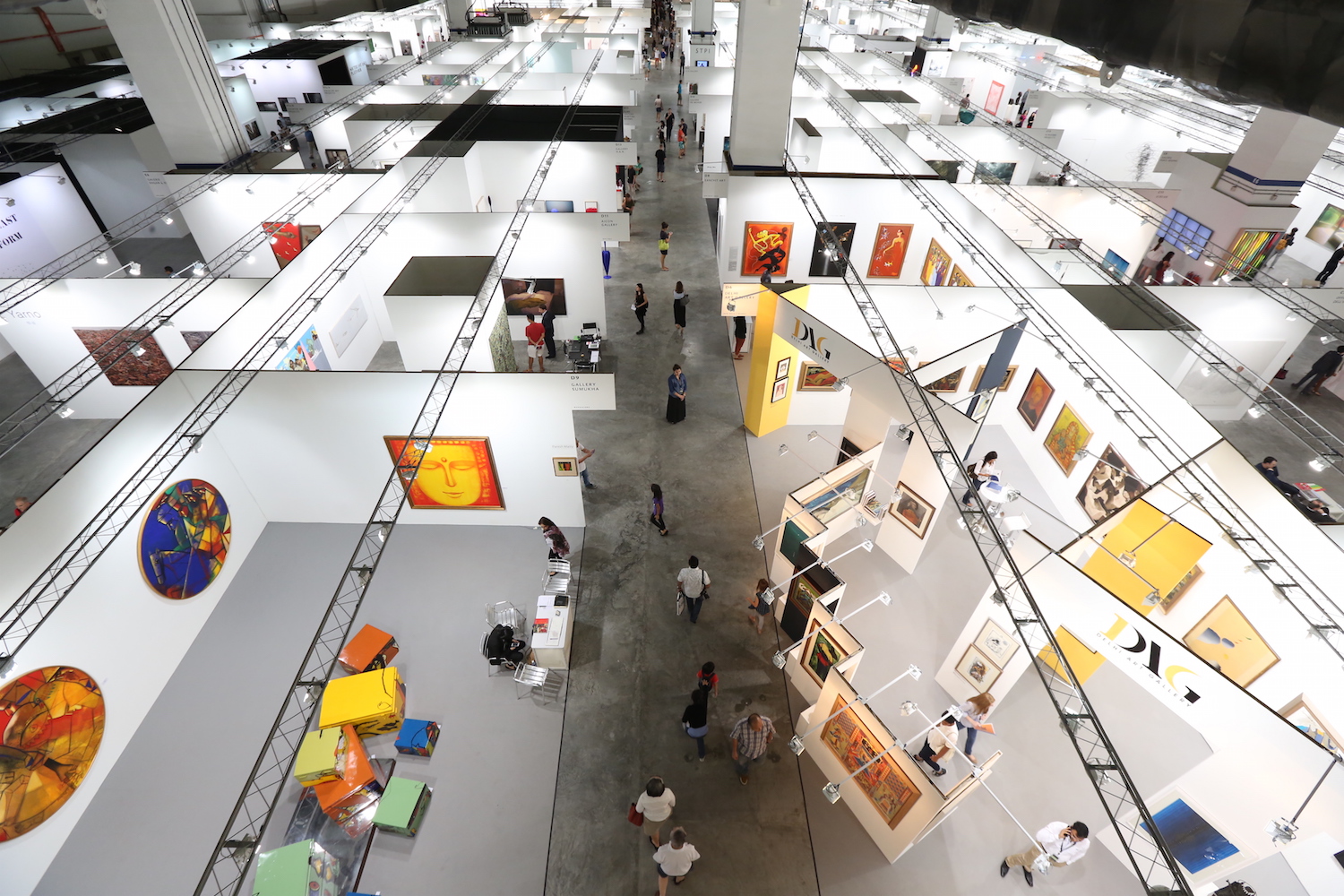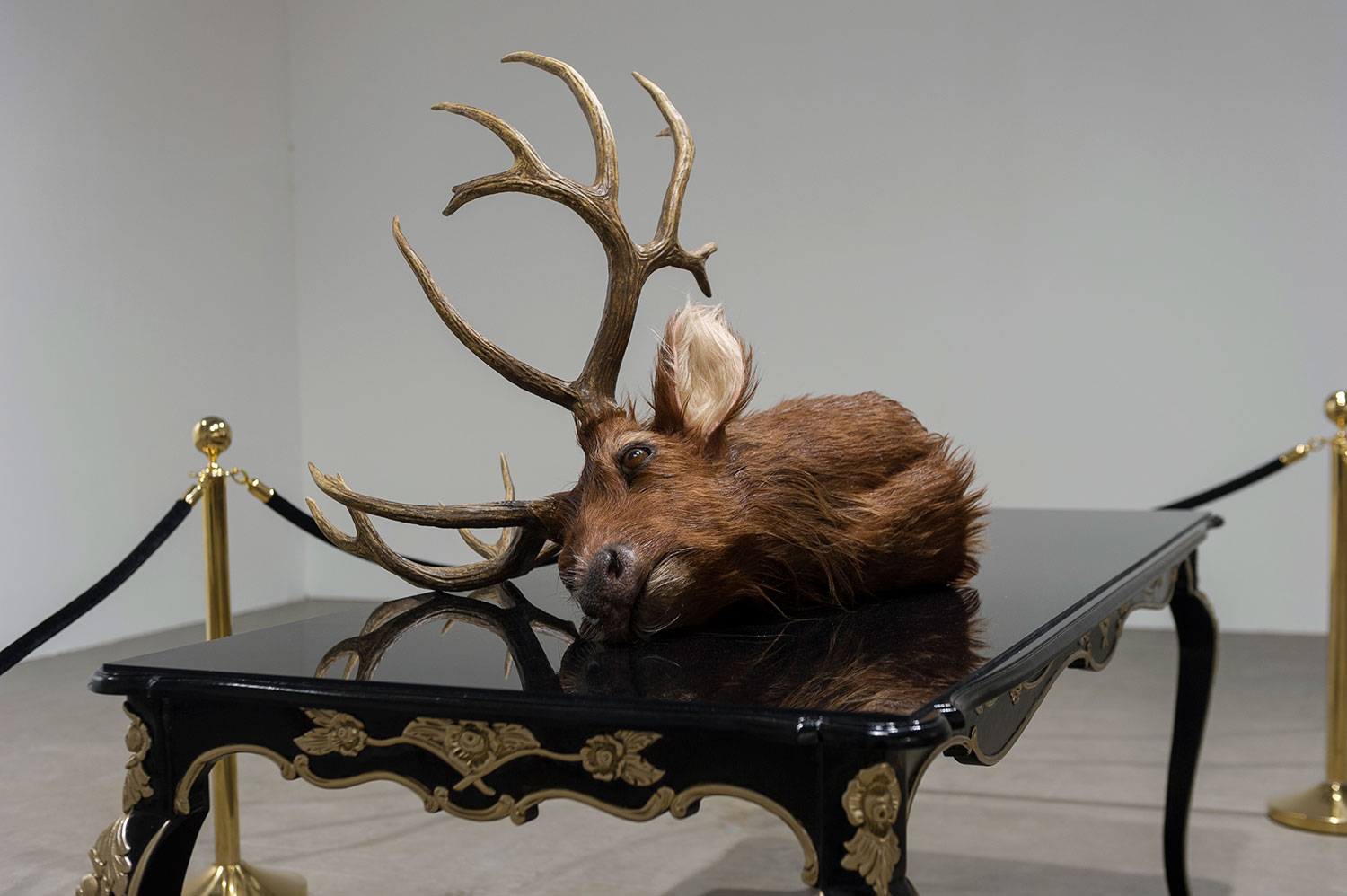A gang of avant-gardists wants to have a utopian impact on Singapore society. They hope to shape the present world and embrace their dreams. But what is the viewer’s role? “Singapore Utopia” at Chan + Hori Contemporary revolves around this question, provoked by an urgent need to challenge ideas of nationhood in the face of globalization and mass migration. This show is partly inspired by the 2019 Singapore Bicentennial, which marks the two hundredth anniversary of the arrival of Sir Stamford Raffles to Singapore.
As a society undergoes change its art also changes, reflecting a new mind and spirit. Questioning both the present and the future, “Singapore Utopia” takes the form of a speculative collection that addresses the perceived needs of its audience. Conceptualizing physical, social, and mental spaces, fifteen Singaporean artists present experimental works with revolutionary potential. By addressing the machinations of fear in the “nanny state” of Singapore, the works are also about finding hope.
Upon entering the gallery, viewers are presented with Ho Tzu Nyen’s Gould (2009–13), a video in which a pianist lends gestural emphasis to the music he’s playing through a variety of bodily movements, bobbing his head up and down. But viewers soon notice a sinister, white-gloved hand that is directing these unnatural motions from behind. The fear that frequently pervades human society is echoed most potently by Jeremy Hiah’s Paradise Terrorise (2004). In one series of photographs, male dancers, dressed up like Islamic State fighters and brandishing rifles and pistols, link hands and form an energetic circle.
As Dutch artist Constant Nieuwenhuy put it, “Art must in some sense be in opposition to the status quo because of its revolutionary potential.” For Singaporean avant-gardists, “revolution” has come to have a wide range of meaning that includes art-making, public nudity, and freedom of expression. Adeline Kueh demonstrates a renewed interest in the body as the site of sexual revolution in Felt (2019), which consists of lint gathered from thirty hotels across the island over twenty-eight days. The juxtapositions of human hair and skin on stacks of white bed sheets and fabrics are a little shocking. In the context of socially conservative Singapore, the artist is exploring the role of sexuality in social life, and whether erotic desire has a material component.
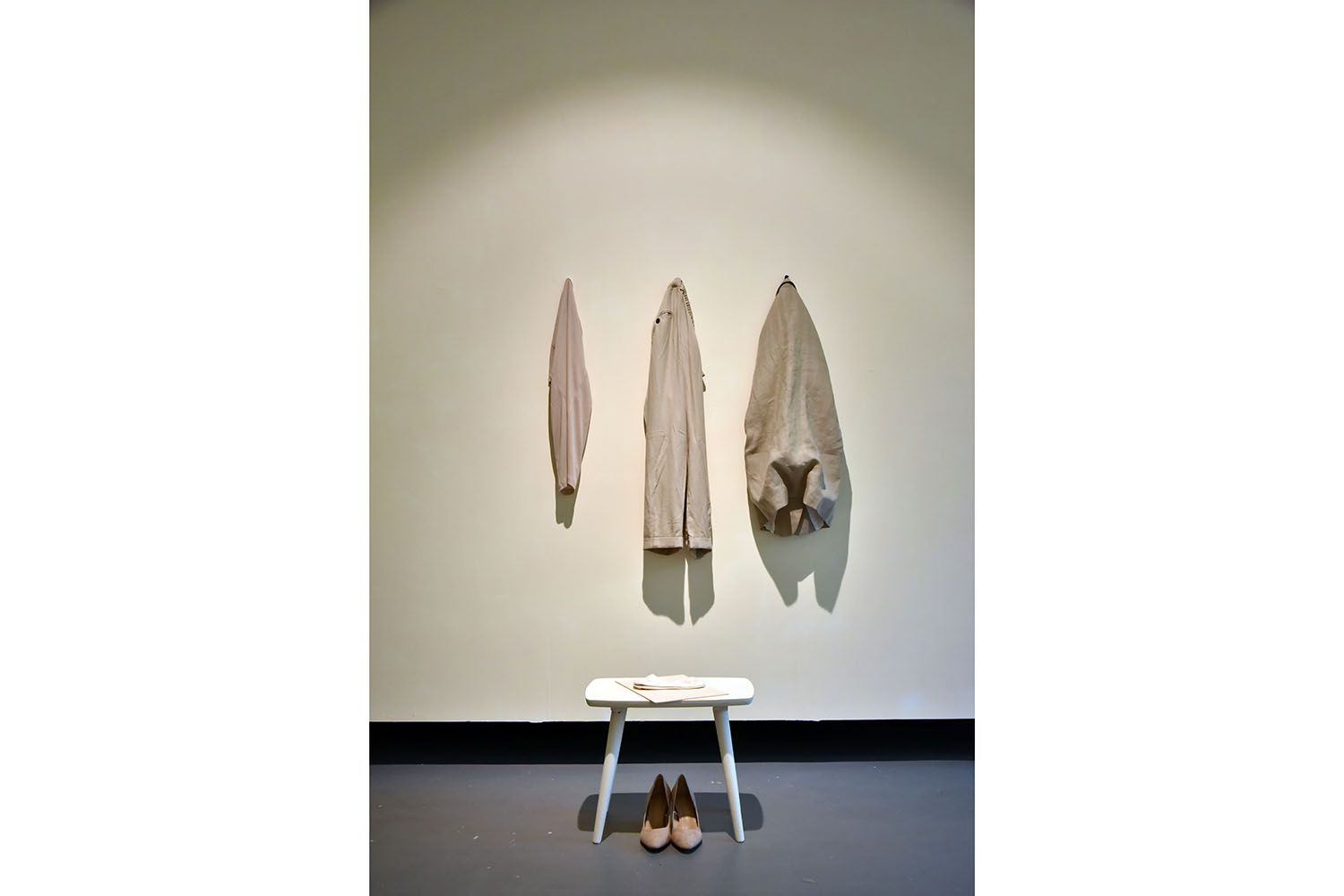
Ezzam Rahman also approaches the subject of sexuality, forcing the issue of queerness into the national psyche. His photography and installation works I’ll love you, I’ll kill you (2017–19) and I’ll stay, do you really have to go? (2017–19) show the artist and his partner, appearing restless and unsettled, occupying different hotel rooms over a period of two years. Rahman’s piece examines the tension between public and private, shared and personal.
My thoughts were interrupted by the announcement that a performance work would be taking place. In a white office getup, Yen Phang walked along a T-shaped pathway smeared with Vaseline and KY Jelly, quickly caking his spick-and-span leather shoes in gunk. He then dipped his head into a black substance and rubbed his body against the gallery walls, imprinting his face in surfaces slathered with greasy lubricants. His latest work, Admin (Your Photocopier Was My Mirror) (2019), deals with the ways in which the body is shaped by social rules prescribing gender, sexuality, identity, and nationhood.
If art can illustrate a utopian vision, it can also turn humankind’s vision of utopia back upon itself. With Skins (2019), Rizman Putra situates his audience within an idealized social environment where free speech reins. Inspired by stand-up comedy videos, published speeches, and song lyrics, Putra pokes fun at racial and religious hate speech in Singapore.
The construction of the Singaporean identity is complex. Some of the artists in the exhibition identify with certain things and call them Singaporean, while others speak of their emotional relationship with Singapore — of feelings they don’t fully understand. That the artworks in “Singapore Utopia” confound easy explanation while generating so many enriching lines of inquiry is a testament to the passion and aspiration that went into their creation.

